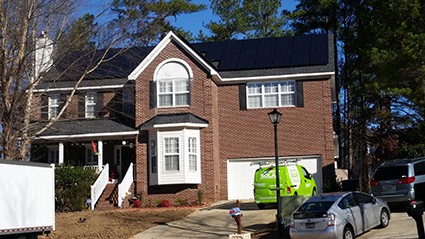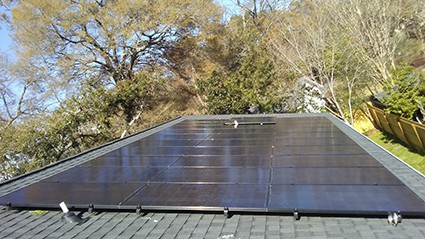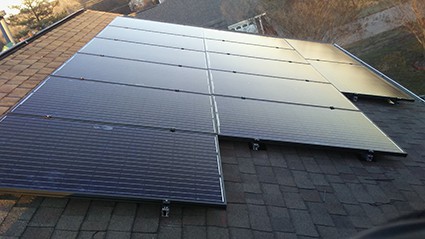The cost of fossil fuels to create household energy will continue to rise in the future due to it being a finite resource.

Adding solar panels to your house can help cut down or even eliminate the dependency on these types of fuels. The price of renewable energy sources will continue to decline as they will continue to grow more efficient in the future.
Global warming continues to be a problem. Climate change is causing storms that strike out of season. It is also producing more powerful storms which causes astronomical costs in rebuilding. Using clean energy can help offset the potential problems with the burning of fossil fuels.
Switching to solar power will not only save energy costs, it is also good for the environment.
Solar Power and the Environment
The environment will be healthier once the switch is made to renewable energy sources. By eliminating the use of fossil fuels, the air will be healthier and the potential to reverse global warming will also help the planet. Installing solar panels can make a difference in the future for ourselves and our children.
The Advantages of Solar Panels
Solar power has become very efficient since their early use.

The efficiency has increased from 6 percent to almost 20 percent. Even on cloudy days, the panels will still produce electrical power. They do not produce any emissions and will not damage the ozone layer. This should continue increasing in the future as new discoveries are made. It will take approximately 8 years for the panels to pay for itself.
A homeowner that installs a solar system on their house will also qualify for a huge tax credit. This will also help lower the cost even further. With little to no maintenance cost, you could reduce your electrical costs to nothing. Solar energy savings will eventually pay for itself.
How Much Power Does a Solar Panel Produce?
This depends on the brand and material the solar panel is made up of, the place where you live, and the available sunshine.

Clouds, trees, and even dust collecting on the face of the panels will determine the amount of energy the solar panel puts out. Manufacturers list on the panels they produce the amount of wattage that is put out under ideal conditions. This varies from different companies, so shop around if you are considering solar power installation.
Picking the Right System
A home solar system needs to be big enough to meet your energy needs. Some of the questions you need to answer include, Will you be tied into the grid system or be completely off-grid? If you are off-grid, you will need a storage battery system to store excess daytime energy that can be used at night. This is a big investment and you need to make sure you pick the right system that meets your needs.

You will need to figure how many panels that your roof will be able to hold. The roof will also have to be structurally sound to hold the extra weight of the panels. Your budget is another thing to consider when figuring how many panels to purchase. A solar loan can help with the purchase of having enough panels. Another benefit of a solar loan is that you can use savings from reduced energy bills to put towards the loan.
The solar cost is the amount of money per watt. The average is now approximately $10 for each watt. A 2 kW system will cost close to $20,000. A lot of utility companies offer incentives which help offset solar cost. One of the first steps in installing solar panels is to research all the available subsidies and tax breaks.
Excess Power
If your home solar system puts out more energy than you use, your meter reverses. Net metering is designed to let you put excess power back into the grid and draw from it during times your system is not putting out enough power. This is a big advantage of staying hooked into the grid, there is no added cost of storage batteries. There will be several days that are cloudy in a row where you will not be producing much energy, net metering is the solution to this problem.
The Process
The first step will be an engineer who will come out to validate that your roof is strong enough to hold the panels.

The engineer will also check the electrical panel to see if it can stand the amperage the extra power will put into it. It might have to be upgraded before work can begin. Solar panel installation might take several months from start to finish since there will be permits to apply for and final inspections before allowed to hook into the grid. Solar energy savings will be noticed soon after hooking into the system if everything is installed right.
More Uses
Solar panel installation is not just limited to homes and businesses. Flexible panels can be installed on vehicles, boats, and even on camping trips. How much power does a solar panel produce? This all depends on the type of panel, the weather conditions, and the place that you live. Portable flexible panels are subject to the same rule. Having power when traveling and camping without noisy generators makes these panels worth having. They are also a source of clean energy that are very efficient.
Solar power and the environment are the key to keeping the planet from having a runaway global warming effect. The use of clean energy will not put out any pollution nor damage the ozone layer. Slowing down and reversing climate change can be done if everybody works together.
Using solar energy takes some planning, money, and hard work. The end results will definitely worth it. With technology constantly increasing, solar panels should become more efficient. Perhaps in the near future, solar energy will be running our automobiles and transportation system. Every step we take to make the world a cleaner place will benefit us.